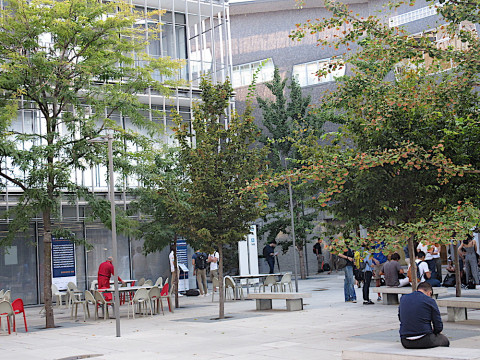Children Learning and Noise (06-20-24)
Goldenberg and colleagues link learning indoors and outside to soundscapes. The team found via physiological data collected from 4 – 5 year olds in urban schools that “children’s resting heart rates while seated and listening to a teacher were significantly lower when outside compared to indoors. . . . Children also moved more while seated during indoor sessions. . . . outdoor learning sessions were significantly quieter than indoor ones, both when children were seated, listening to a teacher . . . and when actively engaged in play and learning activities. . . .
